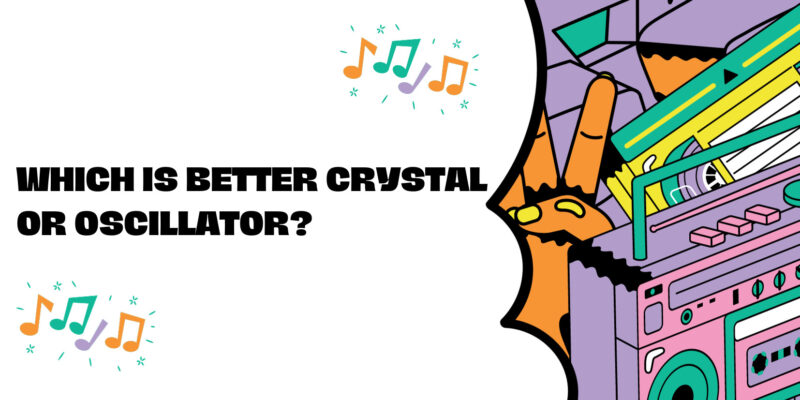In the realm of electronics and digital systems, the choice between a crystal oscillator and a standard oscillator (often called a ceramic oscillator) is a critical decision that can significantly impact the performance and reliability of your electronic devices. Both options serve as clock sources, providing the essential timing reference for microcontrollers, processors, and various digital circuits. In this article, we will explore the differences between crystal oscillators and standard oscillators to help you make an informed choice based on your specific needs.
Crystal Oscillators:
A crystal oscillator utilizes a precisely cut piece of crystalline material, often quartz, to generate stable and accurate clock signals. Here are some key characteristics of crystal oscillators:
- High Precision: Crystal oscillators are known for their high level of frequency stability and accuracy. They offer precise timing, making them suitable for applications where timing accuracy is crucial.
- Low Phase Noise: Crystal oscillators generally exhibit low phase noise, which is essential for applications like radio communication and precision instrumentation.
- Temperature Stability: Crystals have excellent temperature stability, meaning their frequency remains relatively constant over a wide temperature range. This makes them ideal for applications that require consistent performance under varying environmental conditions.
- Longevity: Crystal oscillators typically have a longer operational lifespan than standard oscillators, making them suitable for applications that require extended product lifecycles.
Standard Oscillators (Ceramic Oscillators):
Standard oscillators, often referred to as ceramic resonators or ceramic oscillators, use a ceramic resonator element to generate clock signals. Here are some key characteristics of standard oscillators:
- Cost-Effective: Standard oscillators are generally more cost-effective than crystal oscillators, making them an attractive choice for budget-conscious projects.
- Moderate Precision: While standard oscillators provide reasonable frequency stability and accuracy for many applications, they may not offer the same level of precision as crystal oscillators.
- Temperature Sensitivity: Standard oscillators can be more sensitive to temperature variations, which may result in frequency drift in extreme temperature conditions.
- Common Applications: Standard oscillators are commonly used in consumer electronics, including clocks, low-cost microcontrollers, and digital gadgets where precision timing is not critical.
Choosing the Right Option:
The choice between a crystal oscillator and a standard oscillator depends on your specific application requirements:
- High Precision: If your application demands high precision and stable timing, especially in critical areas like communications, medical equipment, or aerospace, a crystal oscillator is the preferred choice.
- Cost-Effectiveness: For cost-sensitive projects where precision timing is not critical, standard oscillators provide a cost-effective solution for basic timing needs.
- Environmental Considerations: If your device will be exposed to extreme temperature variations, consider a crystal oscillator for its superior temperature stability.
- Longevity: If your project requires a long product lifecycle, crystal oscillators are often the better choice due to their durability and extended operational lifespan.
Conclusion: Making the Right Choice
The decision between a crystal oscillator and a standard oscillator ultimately depends on your project’s specific requirements, budget constraints, and environmental conditions. Both options have their merits, and selecting the appropriate clock source ensures the reliable and accurate operation of your electronic devices. Carefully assess your application’s needs to determine which type of oscillator best suits your project’s goals.


